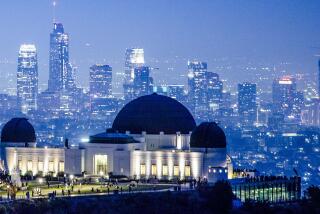India Shangri-la Feels Pinch of Progress
- Share via
LEH, India — The tolerance of the people in this mountain town is nearly inexhaustible, but last summer it finally ran out. The water supply had been all but used up by the tourist hotels, guest houses and restaurants.
Until about 10 years ago, there were no such places here. But now they proliferate--the Yak-Tail, the Moonland, the New Gaytime and the Dreamland, to name a few--and because their guests had taken virtually all the water, the local residents were now forced to wait hours in line for a bucketful.
Further, many of the small shops in the 600-year-old bazaar had been taken over by pushy trinket salesmen from distant Kashmir. And the Kashmiris, most of them Muslims, had taken to dressing in the traditional Buddhist costume of this region--the silk top hat, or gonda , and burgundy wool robes tied with a sash.
Sacred Cloth Paintings
Even worse, the shopkeepers began selling replicas of sacred Buddhist cloth paintings, or thankas .
“They were taking them from under chairs where they were sitting and selling them,” according to the head Buddist lama of Ladakh, the venerable Kushok Bakula.
It was all more than anyone here could take. Young lamas studying in the cliffside monasteries high above the town interrupted their meditations and filed down to the streets.
They removed the Buddist religious items from the shops and, for a time at least, the ancient town became what it had been: yak butter and tea shops, bitter barley beer called chhang , old women squatting at the edge of the street in their gondas and shoes with long curving toes, selling potatoes and milk from the dzomo , a creature that is half cow and half yak, and is found only here and in difficult crossword puzzles.
‘The Last Shangri-la’
In 1977, the year before the Leh airport was opened to Indian Airlines tourist flights, National Geographic reporters made their way to this remote place at the northern tip of India, near the border with Tibet, and they called it “the last Shangri-la.”
Many years before, more intrepid visitors had another name for Leh and the jagged, treeless peaks of the surrounding region, almost all of which is more than two miles above sea level, a rare combination of desert and arctic climes. They called it “Moonland.”
To the present-day visitor, the name reflects both the outer-space terrain and the cosmic quality of the native Buddhist life. It is a place of bells and drums and long horns that are used to call the faithful to prayer.
Transfixed priests, oblivious to others, will walk past chanting the sacred mantra: om mani padme hum (hail to the jewel in the lotus). The valleys are scarred with mani walls built of stones inscribed with the mantra and chhorten, Buddhist monuments shaped like chess pawns.
Breathing Problems
The Western visitor gasps for air and suffers splitting headaches because of the thin air at this altitude (about 11,500 feet), but Ladakhis scramble nimbly up the steep slopes.
More than 100 years ago a small group of Moravian Christian missionaries came here from Europe, and several stayed and opened schools, which are still here. But through the years the Moravians have managed to convert only a few dozen of the people.
Now even the missionaries complain about the tourists, more than 12,000 of whom came to this town of 15,000 people last year seeking the tranquility of the Buddhist gompa monasteries and their exquisite works of art.
“I’ve warned them that we can’t have many more tourists up here,” Gertrude Wright, a teacher at the Moravian school, told a visitor. “We have so few gompas anyway. Last year, we had so many tourists it was just like Rome. Many of them wanted to sit and quietly watch the lamas. They said all they could see were other tourists.”
Most Calm About Change
With the exception of the crisis over the Kashmiri merchants last summer, most Ladakhis are calm about the radical change in their life here. The only leader with serious objections to the invasion of the tourists is the lama Lobzang.
“I am dead against opening Ladakh for tourists,” he said. “There may be some economic benefit from it, but only a handful of people are benefiting. But culturally, religiously, everything is changing because of the tourists.”
Lobzang, who is a member of an Indian government commission, actually lives in New Delhi and only visits Leh.
Kushok Bakula, a sunken-cheeked old man who talked with reporters from an elegant, carved wooden bed with a silk canopy at his monastery in Leh, was more tolerant. It was sad about the Kashmiri shopkeepers, he said, and it was particularly tragic that a sacred thanka had been stolen by tourists. Also, he did not care for the young Ladakhis in blue jeans and aviator glasses, and he found the video movie parlor in town disturbing.
But, all things considered, the head lama of Ladakh said, the opening of Shangri-la has not been all bad.
“In any place you are going to have some trouble-shooters,” his translator quoted him as saying. “At least the people of the world can now see the rich treasures of Ladakh.”
More to Read
Sign up for Essential California
The most important California stories and recommendations in your inbox every morning.
You may occasionally receive promotional content from the Los Angeles Times.










